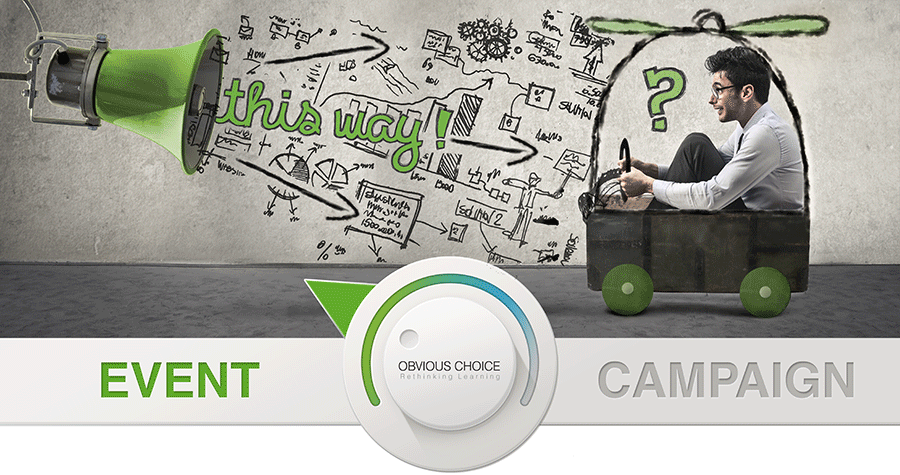Share this Post
We’ve shifted the dial completely!
The problem is philosophical
Much has been written about the effectiveness of digital and blended learning. I won’t speak to that issue broadly, but I’d like to share my observations from over 20 years in the eLearning industry, serving Australian businesses.
While there is no doubt the visual and instructional quality has incrementally improved over the years, there are some fundamental limits that are beginning to bite, leading to diminishing returns, both in performance results and in return on investment. These limits are structural and arise from both the philosophy driving corporate learning and the reaction of the modern learner to this philosophy.
The early days of digital learning promised convenience, access and quality. This quickly gave way to the utility of volume and cost reduction, then eventually swung back to the comfortable middle ground of blended learning. And there we have stayed. While there have been incremental improvements, the instructional, content and visual design approaches of today are not all that different to those of 15 years ago.
Are learners fatigued or just tired of us?
But it’s not the fault of the vendors, nor can blame be laid at the feet of L&D. The fault lies in the characteristics of business. An inherently reductionist, hierarchical and inflexible entity cannot help but give rise to learning of the same stripe.
Learning that is generic, inflexible and driven by top down perceptions. Analysis that sits firmly on the surface, paying lip service to skills acquisition and measurability and rarely looking at the underlying causes and behaviours. Content that is visually sumptuous and technically clever, but that never really arises from or sits within the context it is supposed to support.
To be fair there are glimmers of hope in approaches like curated content and social learning, but unless we address the underlying problems, I suspect these approaches will never realise their potential.
How many times have you been asked to design blended learning for apparently inherently fatigued and time poor learners? Well I don’t think these qualities are inherent. I think they are tired of our learning approaches and no longer have time for them.
Suppose, what if, imagine…
But suppose we used quantitative data to identify where performance problems are and deep frontline engagement to understand their causes at a core attitudinal and behavioural level.
What if we transferred power to staff, giving them a structure and robust toolkit that lets them define and address their own challenges, but in a supportive and fun format that removes the pressure of traditional performance improvement programs.
Imagine if their line managers and supervisors collaborated with the team, both individually and as a group to remove attitudinal and behavioural barriers that prevent them from rising to those challenges. Suppose they worked as a team, continually negotiating, adapting and personalising their own learning in response to their week by week needs.
And finally, what if we did all of this as part of the workplace flow, with minimal formal learning and minimal interruptions to work.
We saw no good reason why this could not be done. So we did it.
Performing to learn, not learning to perform
We created performance campaigns. A simple, yet powerful approach that gamifies workplace coaching and empowers staff to focus on the value levers that really matter.
Our approach starts with performance needs analysis that uncovers key themes to anchor a monthly cycle. These themes articulate the KPIs of the business in a way that resonates with the lived experience of frontline staff.
Next we anchor these monthly themes to a simple toolkit that empowers supervisors to become workplace coaches. This toolkit simply and painlessly shows even first time supervisors, how to support staff as they question their own workplace potential and translate these insights into action. Supervisors are also taught how to help staff breakthrough their own barriers by setting and achieving goals and by opportunistically coaching staff within the daily work flow.
The whole experience is wrapped in a gamification and recognition layer that rewards and sustains engagement as the monthly cycle repeats, ensuring tentative steps, become lifetime habits.
It’s incredibly exciting to be sharing this with you. We are already implementing this approach with clients. It’s already clear this will be a game changer for them and us.

